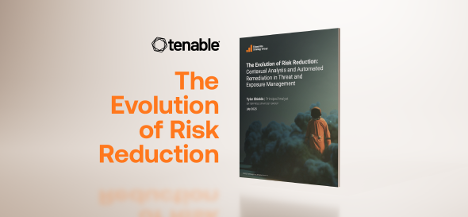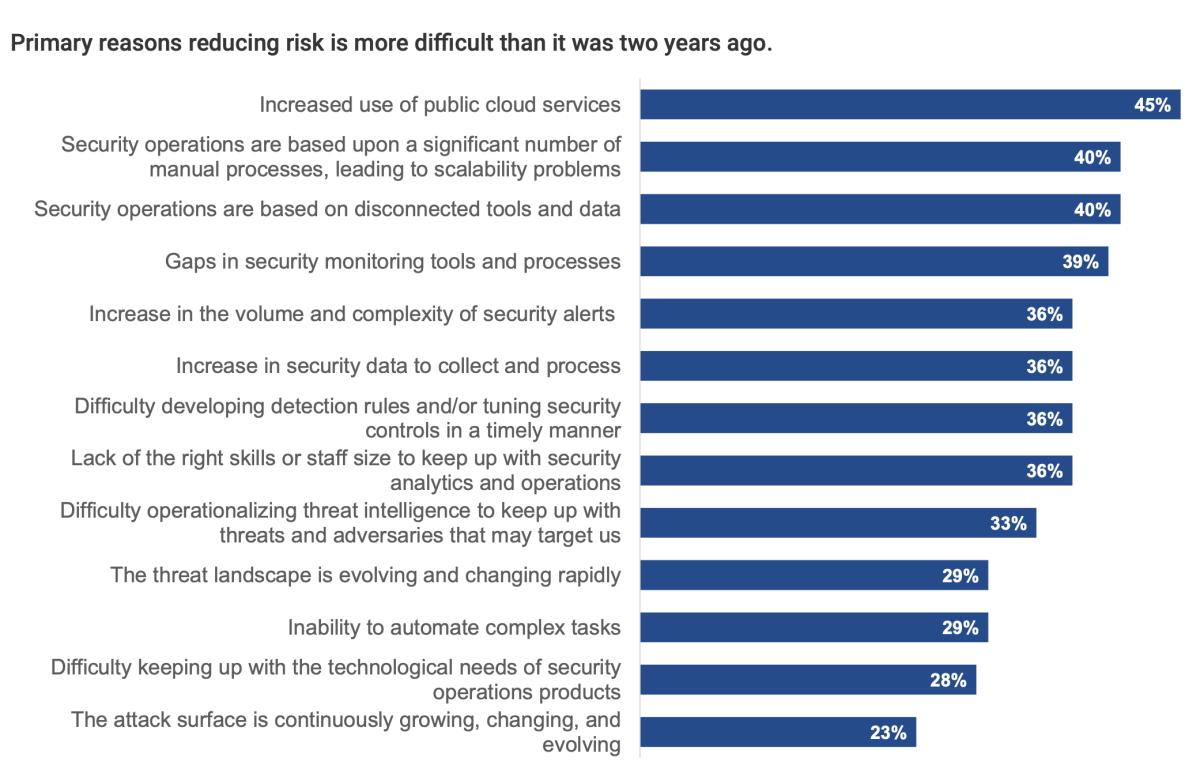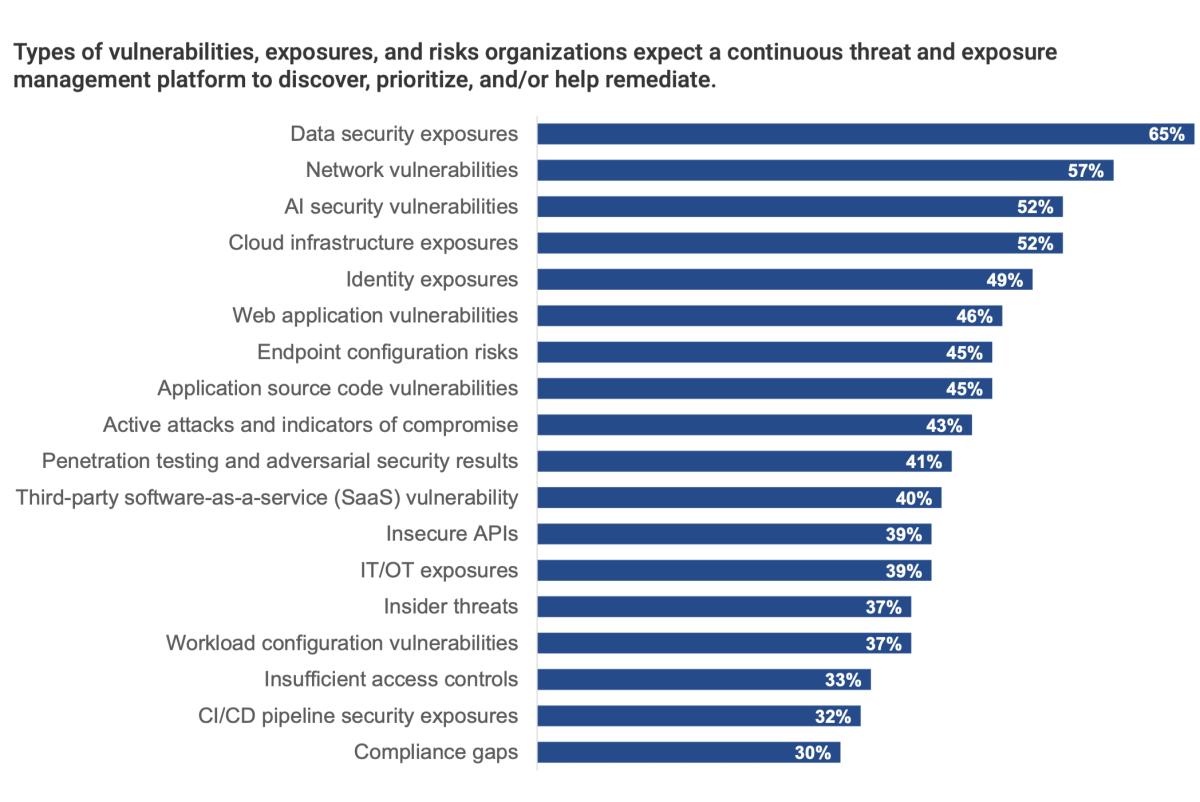
read file error: read notes: is a directory 2025-9-25 13:0:0 Author: www.tenable.com(查看原文) 阅读量:10 收藏
September 25, 2025
4 Min Read

A recent study conducted by Enterprise Strategy Group, now part of Omdia, in partnership with Tenable reveals that complexity is driving a growing number of organizations to increase their exposure management budgets. Here are 5 considerations to help make the most of your investments.
Key takeaways
- Reducing risk is becoming more challenging due to cloud complexity, manual processes, siloed tools and the rapid rise of AI.
- Exposure management is the key to effectively reducing risk by unifying data, cutting through the noise and prioritizing what matters most.
- Budgets are shifting, with over 86% of organizations increasing their exposure management spend.
- Future-proof your investment with a platform that seamlessly integrates with your existing tools and adapts to new ones as your needs evolve.
If you think it’s getting harder to reduce risk in your organization, you’re not alone.
Nearly three-quarters of organizations (71%) say the process of reducing risk and cyber exposures has not improved — or has actually become more difficult — over the past two years, according to a study conducted by Enterprise Strategy Group in partnership with Tenable.
Why is this so? We see four key factors at play:
- Public cloud adoption is adding layers of complexity.
- Limited resources and outdated manual processes make it difficult to take a scalable, proactive approach to risk reduction.
- Disconnected security tools are coughing up volumes of cyber threat data, burying security and IT teams in piles of alerts, making it difficult to prioritize remediation efforts.
- AI is rapidly emerging as both a business enabler and a new addition to the attack surface.

On top of the challenges security teams already face, reducing risk is becoming even more complex as exposures expand, going beyond traditional vulnerabilities to cover a growing range of risks, including:
- Data security exposures (65%)
- Network vulnerabilities (57%)
- AI security weaknesses (52%)
- Cloud infrastructure risks (52%)
- Identity-related exposures (49%)

One thing all these challenges have in common? They can be solved by investing in an exposure management platform.
Exposure management breaks down silos by ingesting and unifying data from across your security stack — including vulnerability management, cloud security, application security, endpoint security, identity management, operational technology (OT), internet of things (IoT) and AI. With all your security data in one place, an exposure management platform streamlines prioritization by connecting the dots across risks and domains — filtering out background noise to expose truly dangerous threats — reducing manual effort for stretched security and IT teams, and allowing them to focus on fixing what matters most in your environment.
Organizations are going all in on exposure management
The Enterprise Strategy Group study, “The Evolution of Risk Reduction: Contextual Analysis and Automated Remediation in Threat and Exposure Management,” shows that, as organizations realize the siloed approach to cybersecurity isn’t reducing risk, they’re looking to increase their investments in exposure management technology. In fact, the vast majority of organizations (86%) have increased their spending on exposure management technology in the past 12 months, while even more (88%) intend to do so in the next 12 months. Of these, more than a quarter (28%) said their exposure management spending has increased significantly in the past 12 months, and 29% expect significant increases in the next 12 months.

5 ways to future-proof your exposure management spend
Here’s what to look for when you invest in an exposure management platform to avoid adding to the troubles caused by siloed tools and disparate data:
- A single, unified platform that ingests data from across your security ecosystem—giving you one central place to manage risk, cut down tool sprawl, and see your entire attack surface in context.
- AI awareness. From developers to business leaders, AI is being embraced at a rapid pace in most organizations. You need to know who’s using AI platforms in your organization — whether “officially sanctioned” or “shadow AI” — and what they’re doing with them.
- Automated prioritization and workflows that zero in on the highest-impact risks, cutting back on manual processes and freeing your teams to focus on what matters most.
- The ability to spot toxic risk combinations of unpatched vulnerabilities, misconfigurations, and excessive permissions so you can close the gaps attackers are most likely to exploit.
- A platform that enables you to maximize the value of your existing security investments by ensuring all your tools work together for better outcomes.
How Tenable can help
Tenable One was built to make risk reduction both smarter and more manageable. Instead of teams working in silos and drowning in alerts, it brings all your data and people together in one place, giving a clear, unified view of the entire attack surface. It automates consolidation and prioritization, reducing manual effort, while connecting the dots across every risk — including emerging AI threats — so teams can cut through the noise and focus on the exposures that matter most. And because it can tap into any data source and handle any type of risk, it doesn’t just protect what you know today — it gives you the flexibility to stay ahead of whatever comes next, across cloud, on-premises and AI-driven environments.
Learn more
- Read the Enterprise Strategy Group report, “The Evolution of Risk Reduction: Contextual Analysis and Automated Remediation in Threat and Exposure Management”
- Check out the Exposure Management Resource Center
- Visit the Exposure Management Academy
- Learn more about Tenable One

Hadar Landau
Product Marketing Manager, Tenable
In her role as a Product Marketing Manager at Tenable, Hadar Landau focuses on Tenable One and Exposure Management. Hadar uses her extensive experience to help lead the way and strengthen Tenable's Exposure Management story.
- Exposure Management
- Research Reports
Cybersecurity news you can use
Enter your email and never miss timely alerts and security guidance from the experts at Tenable.
如有侵权请联系:admin#unsafe.sh